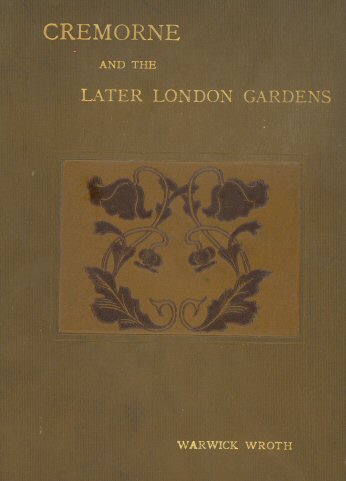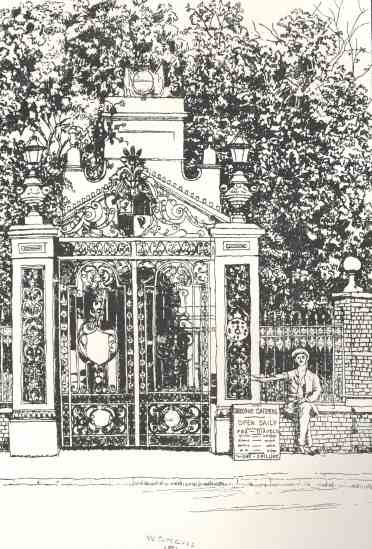Transcribed from the 1907 Elliot Stock edition ,. Many thanks to the Royal Borough ofKensington and Chelsea Libraries for allowing their copy to beconsulted in making this transcription.
CREMORNE
AND THE
LATER LONDON GARDENS
BY
WARWICK WROTH
ASSISTANT-KEEPER OF COINS IN THE BRITISHMUSEUM;
AUTHOROF
‘THE LONDON PLEASURE-GARDENS OF THEEIGHTEENTH CENTURY’
WITH TWENTY-FIVE ILLUSTRATIONS
LONDON
ELLIOT STOCK, 62, PATERNOSTER ROW, E.C.
1907
p.vPREFACE
The open-air resorts described inthis volume lack the romantic associations of the classicpleasure-gardens of the eighteenth century, and it is impossibleto impart to Cremorne or the Surrey ‘Zoo’ thehistoric dignity of a Vauxhall or a Ranelagh. Yet, if theseplaces are undeserving of the detailed treatment that has beenaccorded to their prototypes, they may claim at least a brief andmodest chronicle, which may seem the more necessary because ithas mainly to be constructed, not from books, but from strayhandbills and forgotten newspapers. Already, indeed, we aregrowing accustomed to speak of the nineteenth century as the‘last,’ and to recognize that the London of Dickens,and Thackeray—the London of the thirties, the forties, andeven of the sixties—had a physiognomy of its own.
Such places of resort, for the most part, enjoyed no kind offashionable vogue; they were frequented (if invidiousdistinctions must be made) by the lower middle classes and the‘lower orders.’ Yet they offer some curiousglimpses of manners and modes of recreation which may be worthconsidering. I have endeavoured to describe some twenty ofthese places, selecting those which seem, in various ways, to betypical. To the general reader this selection will beenough—though, I trust, not more than enough—but theLondon topographer who turns to the appendix and the notes willfind a quite formidable list of tea-gardens and tavern-gardens,which, if my aim had been to omit nothing, I could have describedin greater detail.
p. viI havetaken some pains in compiling these lists, partly fromtopographical curiosity, partly from the conviction that theirenumeration almost rises to the dignity of pointing amoral. The main contrast is between the tavern andpublic-house of former days and the gin-palace, with whoseaspect—externally, if not (in any sense of the word)internally—we are only too familiar. A descriptionthat I have found in a London guide-book of 1846 of the tea andtavern gardens of that date has already an old-world air:‘The amusements are innocent, the indulgence temperate; anda suitable mixture of female society renders it [our guide meansthem BU KİTABI OKUMAK İÇİN ÜYE OLUN VEYA GİRİŞ YAPIN!
Sitemize Üyelik ÜCRETSİZDİR!

